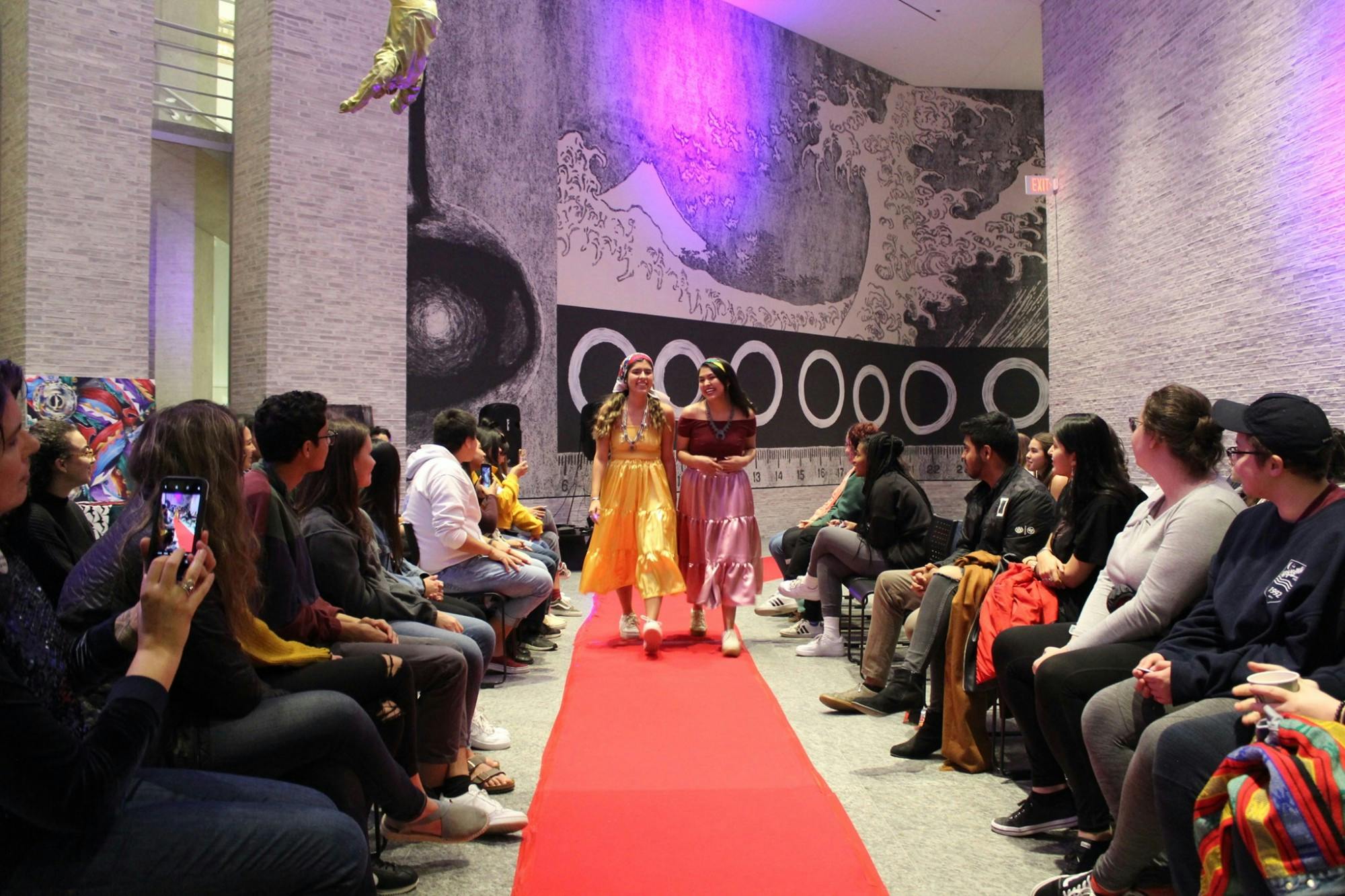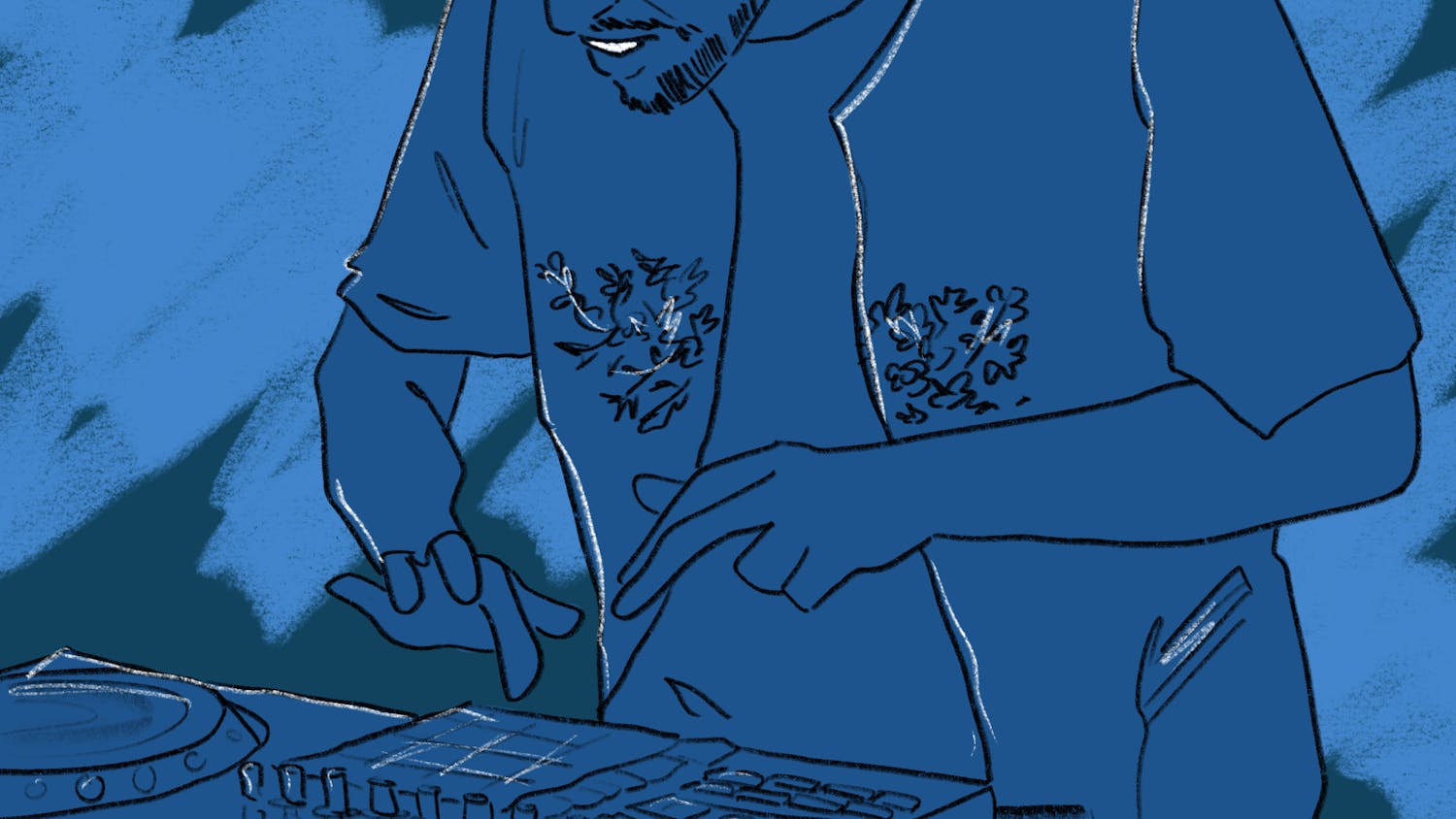The third annual Indigenous Peoples’ Month Fashion Show will return to the Russo Atrium of the Hood on Oct. 21 at 8 p.m. The show aims to celebrate Indigenous fashion by highlighting its characteristic artistry, design and innovation.
The fashion show is open to all students in person and will be streamed on Facebook Live. After a virtual show last year due to COVID-19, a return to an in-person audience promises greater involvement despite capacity limitations and continued safety restrictions.
The show presents art in an unconventional way. Unlike a typical gallery tour or exhibit, the show offers attendees the chance to bead, make buttons and watch a live fashion show — during which models will don clothing and accessories crafted by Indigenous designers, according to the event’s promotional materials.
This program is co-sponsored by campus groups Native Americans at Dartmouth, Hōkūpaʻa and the Native American Program in collaboration with the Hood and brings in students from a variety of backgrounds to help with set up, modeling, makeup and more. The Hood sent out a Google Form that allowed all students to sign up for different volunteer positions.
Hōkūpaʻa — a campus organization made up of students who are from or connected to the Pacific Islands — aids in the enrichment of student knowledge about a variety of cultures through exposure to different Indigenous clothing and prints, according to their website.
“This fashion show aids our mission of supporting and enriching the educational experiences of Pacific Islanders and Indigenous people because we are able to share a part of our culture through the Indigenous models, their clothing and accessories, the music during the show and also the commentating — when information and context are provided for the individual models,” said Hōkūpaʻa’s co-chair Kalā Harman ’23.
The fashion show is not limited to Indigenous involvement, instead welcoming and encouraging people of all different backgrounds to attend or volunteer. Russell Chai ’24, who is not Indigenous, looks forward to not only the educational aspect of the fashion show, but also the immersion into a culture he is unfamiliar with.
“I’m really excited to celebrate Indigenous culture and learn more about fashion,” said Chai. “I love fashion and I’m excited to see a differing perspective than the ones most commonly portrayed in the media.”
The Hōkūpaʻa group hopes that the show can act as a point of connection between Dartmouth’s Indigenous and non-Indigenous students and create an environment in which understanding and empathy can develop, according to Harman.
“This fashion show aims to introduce Indigenous fashion to non-Indigenous students and enrich their knowledge of our different cultures, the origin of the different pieces of Indigenous clothing, and the significance of the print or the clothing itself,” said Harman.
Through their co-sponsorship of the event, Hōkūpaʻa aims to help construct an accurate and respectful presentation of Indigenous culture to ensure a genuine depiction of the Indigenous — in particular, Pacific Islander — experience, according to Harman.
“I think the most important thing is that the Dartmouth community is able to see who the Indigenous students at Dartmouth are,” said Harman.
The Indigenous Peoples’ Month Fashion Show is especially pertinent to Dartmouth, which has historically been accused of erasing Native American history and Indigenous voices. Chai feels that the fashion show is a great tool to acknowledge the mistakes of the past and gives the opportunity for people with limited knowledge about Indigenous culture to become involved in its observance.
“I think Indigenous culture is something that needs to be celebrated at a place like Dartmouth,” said Chai. “Considering the colonial practices that our College has practiced from its founding until now, it’s important to give Indigenous bodies a place under the spotlight.”
Filling a deficit for fashion related events, the show has garnered support from the Fashion et cetera club, which aims to highlight Dartmouth’s fashion diversity through the exploration of trends, styles and movement within the fashion community.
“We’re excited to see what fashion looks like at Dartmouth, how it is possible to have a fashion show at Dartmouth and how the Dartmouth community responds to that,” said Fashion et cetera creative director Joshua Vorbrich ’24. “There’s not a ton of fashion-related things happening at Dartmouth in any given term. And the fact that there is an actual fashion show going on, that is something that epitomizes what our club focuses around.”
Fashion et cetera members will be volunteering at and attending the event.
The involvement and accreditation of Indigenous student designers, models and volunteers in the show will address the existent biases already in the fashion world, such as the theft of native peoples’ intellectual property, according to Harman.
“A lot of people, myself included, have probably been exposed to a lot of influences of Indigenous fashion, but were not keyed into them or not made aware — whether it is bigger artists taking inspiration or taking the ideas of indigenous artists and integrating them into their own lines without crediting Native artists,” said Vorbrich. “I think highlighting Indigenous fashion and how it has shaped what we wear today is super important.”




